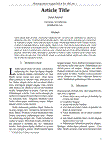| Summary: | Aquaculture is part of the solution for meeting the growing world demand for food, mainly as an animalprotein source. However, current yields are insufficient for aquaculture to play this crucial role. Growth-rateenhancement is one of the approaches that have been exploited in this regard. Also, losses caused by bacteria,viruses and parasites remain a significant problem. It has been demonstrated that growth stimulants contributenot only to growth enhancement but also to fish health improvement. Growth Hormone Releasing Peptide-6(GHRP-6) is one of the earliest-developed, synthetic, peptidyl growth hormone secretagogue receptoragonists. These compounds mimic the effect of the endogenous ligand, ghrelin. This peptide has shown itsbenefits for both growth enhancement and immune system stimulation in fish and crustaceans. In the presentstudy, we demonstrate that intraperitoneal administration of GHRP-6 induces liver insulin growth factor-Imessenger RNA, and increases growth hormone levels in juvenile tilapia (Oreochromis sp.), in a time-courseexperiment. In addition, administration of GHRP-6 in formulated feed to tilapia larvae was assessed. Growthand immune parameters such as lectin titers and intestinal intraepithelial lymphocyte numbers were increasedin treated larvae. We also evaluated the effect of GHRP-6 injection over feed intake in shrimp and its effectson shrimp growth when the peptide was administrated by successive immersion baths. GHRP-6 increasedfeed intake, body weight and size, the number of rostral spines and gill branches, protein concentration andhaemocyte number in treated shrimps.
|
|---|
